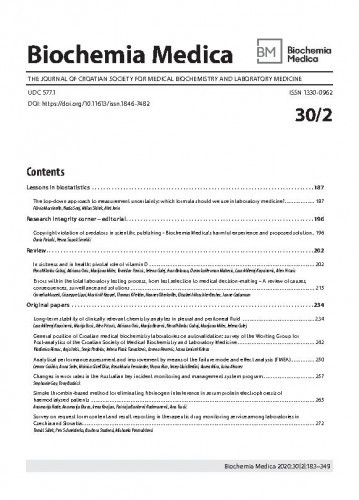Introduction: The capability of glucometer internal quality control (QC) in detecting varying magnitude of systematic error (bias), and the potential use of moving sum of positive results (MovSum) and moving average (MA) techniques as potential alternatives were evaluated. Materials and methods: The probability of error detection using routine QC and manufacturer’s control limits were investigated using historical data. Moving sum of positive results and MA algorithms were developed and optimized before being evaluated through numerical simulation for false positive rate and probability of error detection. Results: When the manufacturer’s default control limits (that are multiple times higher than the running standard deviation (SD) of the glucometer) was used, they had 0-75% probability of detecting small errors up to 0.8 mmol/L. However, the error detection capability improved to 20-100% when the running SD of the glucometer was used. At a binarization threshold of 6.2 mmol/L and block sizes of 200 to 400, MovSum has a 100% probability of detecting a bias that is greater than 0.5 mmol/L. Compared to MovSum, the MA technique had lower probability of bias detection, especially for smaller bias magnitudes; MA also had higher false positive rates. Conclusions: The MovSum technique is suited for detecting small, but clinically significant biases. Point of care QC should follow conventional practice by setting the control limits according to the running mean and SD to allow proper error detection. The glucometer manufacturers have an active role to play in liberalizing QC settings and also enhancing the middleware to facility patient-based QC practices.
Sažetak

 Biochemia medica : the journal of Croatian Society for Medical Biochemistry and Laboratory Medicine : 30,2(2020) / glavna i odgovorna urednica Daria Pašalić.
Biochemia medica : the journal of Croatian Society for Medical Biochemistry and Laboratory Medicine : 30,2(2020) / glavna i odgovorna urednica Daria Pašalić.